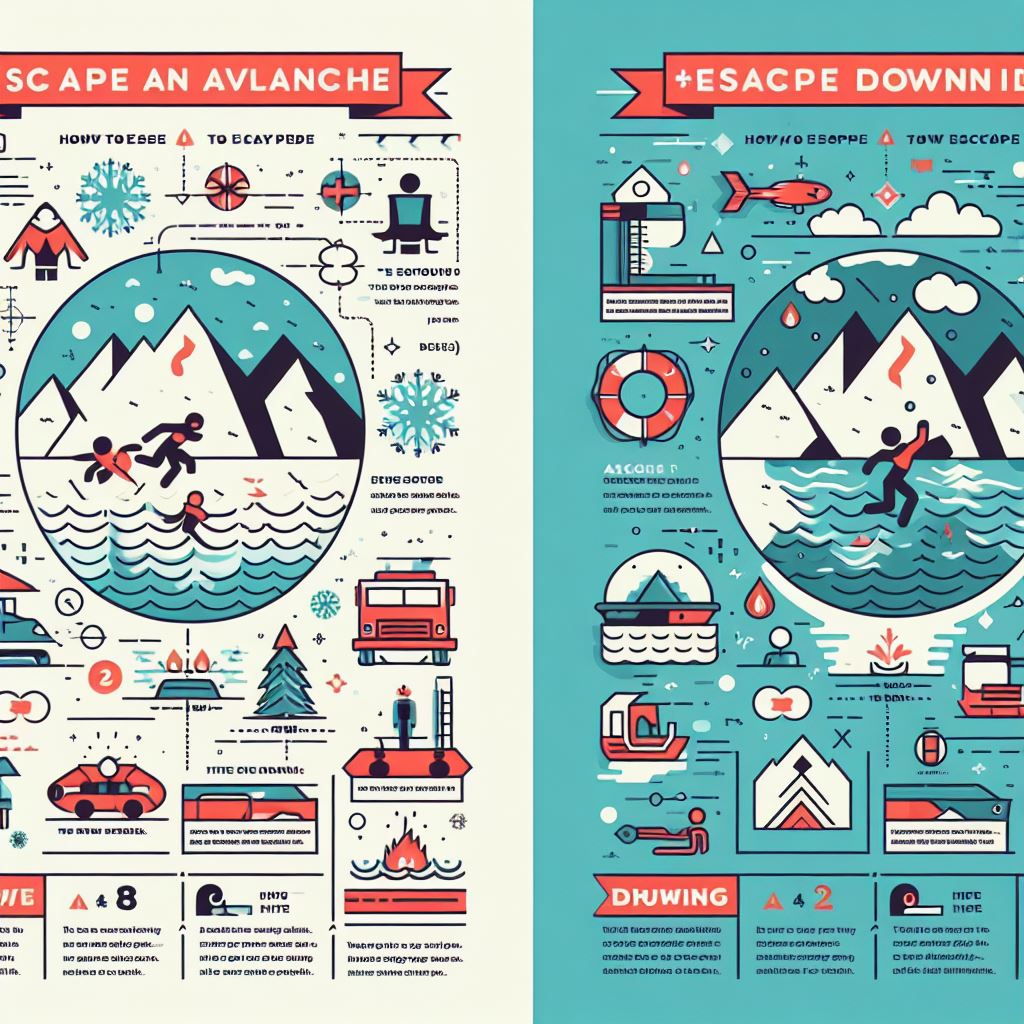如何在雪崩及溺水的情況下逃生?
實用生活中的緊急逃生技巧,務必仔細閱讀,或許在不久的將來可能派上用場。對於喜歡滑雪的朋友,如果不幸遇到雪崩,被埋在深厚的積雪中,應該首先努力爬出雪堆,以免缺氧而危及生命。由於積雪因鬆動而在短時間內變得硬如牆,逃生機會將大幅減低。
根據統計,人在雪中最多僅能存活30分鐘。為確保挖掘的方向正確,可以透過吐口水並觀察其流動方向。若流向鼻子,則應往腳的方向挖掘;若流向右邊,則應迅速移動到左邊,因為水會受地心引力影響向低處流。此外,可以將雙手放在胸前並持續旋轉,以創造更多呼吸空間。
當溺水時,容易驚慌失措,手忙腳亂只會讓人沉得更深,錯失救援時機。在第一時間需保持冷靜,因為人體的腹腔和肺部氣體會使人浮在水面上。不擅游泳的人容易因緊張而皮膚收縮,導致悲劇發生。當不幸落水時,應在第一時間深吸一口氣,雙手交叉於胸前,即使身體下沉,但在浮力的作用下慢慢浮出水面。接著往後仰平展身體,頭部向後蝕,使口鼻露出水面呼吸。如果有餘力,可以將雙手舉過頭頂,增加身體與水的接觸範圍。
另外,可以使用水母的方式來避免溺水。深吸一口氣後,將臉埋向水中,四肢自然伸直,然後採取類似水母的飄浮移動。需要氧氣時,雙手向下壓水,抬頭吐氣。持續呈現漂浮狀態,這樣就能爭取足夠的時間等待救援。
Practical emergency survival skills for everyday life – be sure to read carefully, as they might come in handy in the not-too-distant future. For those who enjoy skiing, if unfortunate enough to encounter an avalanche and become buried in deep snow, the priority is to make every effort to climb out of the snow heap to avoid oxygen depletion and potential danger. Due to the compaction of snow caused by movement, escape opportunities significantly diminish.
According to statistics, a person can only survive for a maximum of 30 minutes in snow. To ensure the correct direction of excavation, observe the flow direction of saliva after spitting. If it flows toward the nose, dig in the direction of the feet; if it flows to the right, quickly move to the left, as water is influenced by gravity and flows toward lower areas. Additionally, placing hands in front of the chest and continuously rotating can create more breathing space.
In the event of drowning, panic and frantic movements will only cause a deeper descent and a missed opportunity for rescue. Keeping calm is crucial in the first moments because the body's abdominal and lung gases naturally keep a person afloat in the water. Non-swimmers may experience skin contraction due to nervousness, leading to tragic outcomes. If accidentally in weak water, take a deep breath as soon as possible, cross your hands in front of your chest, even if the body sinks, slow buoyancy will gradually bring you to the water's surface. Then, tilt your body backward, head leaning back, to expose the mouth and nose to breathe. If possible, raise your hands above your head to increase contact between the body and water.
Another method is to adopt a jellyfish-like approach to avoid drowning. After taking a deep breath, bury your face in the water, limbs naturally straightened, and then move in a floating manner similar to a jellyfish. When in need of oxygen, press water down with both hands, exhale while lifting your head. Maintaining a floating state allows for sufficient time to await rescue.




照片:DALLE3
- 1
- 2
- 3
- 4
